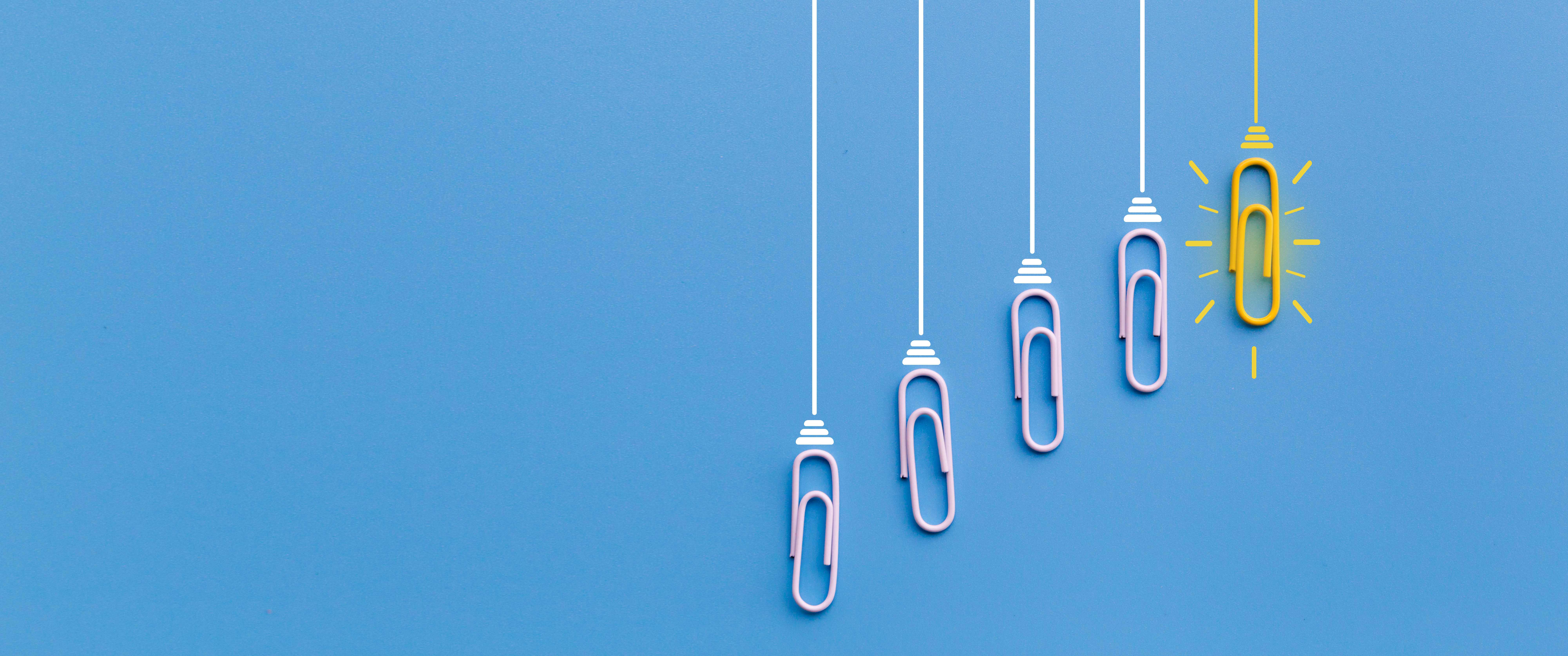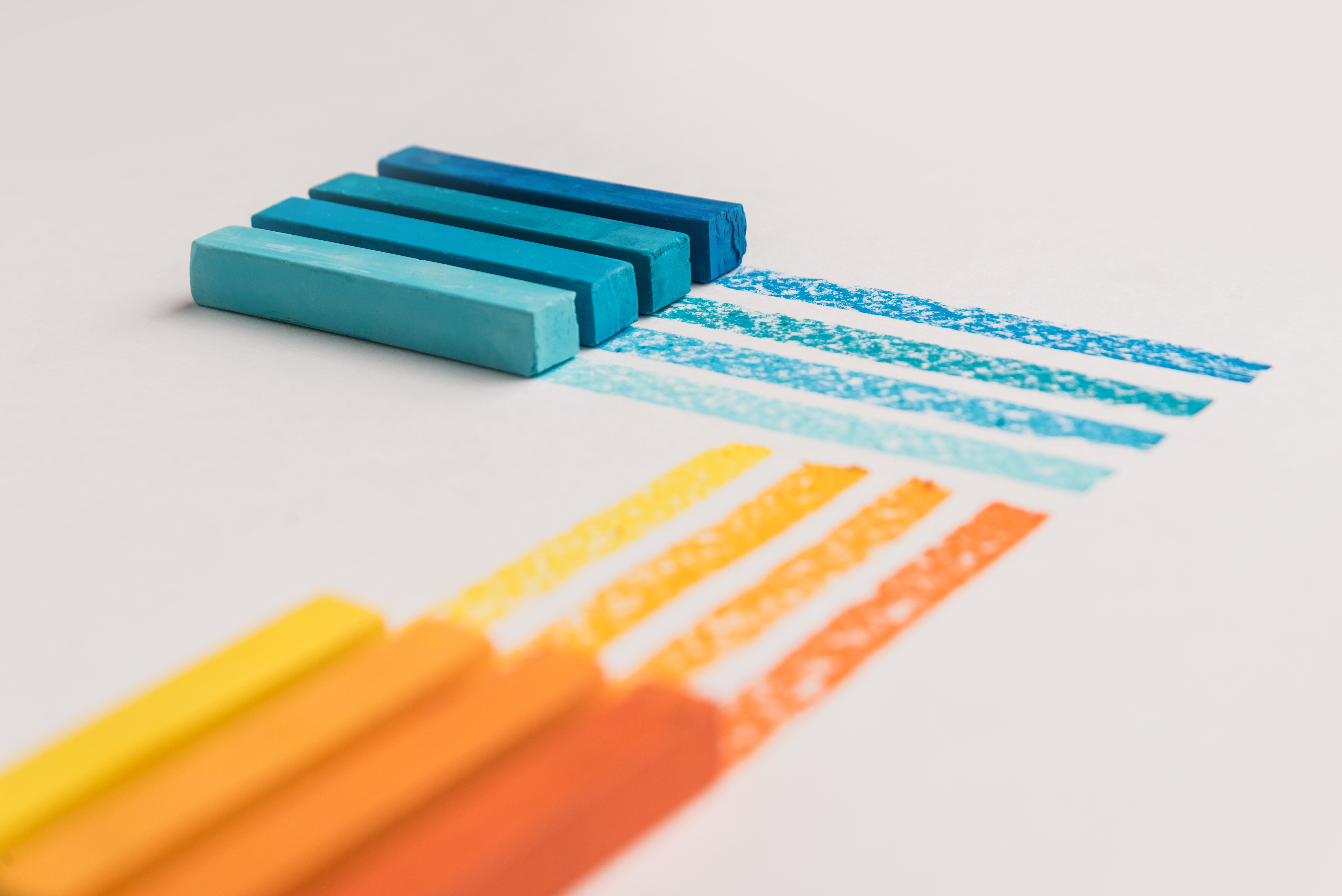We found 40 results that contain "ai"
Posted on: Educator Development


Posted by
6 months ago
AI in Qualitative Research: ChatGPT vs. Human Coders
An MSU study examined ChatGPT’s role in qualitative data analysis, comparing AI-augmented and human coding of hotel guest experiences. AI-generated themes aligned with human-coded ones but missed social interactions and safety concerns. A hybrid approach—AI for initial coding with human refinement—balances efficiency and analytical rigor.
An MSU study examined ChatGPT’s role in qualitative data analysis, comparing AI-augmented and human coding of hotel guest experiences. AI-generated themes aligned with human-coded ones but missed social interactions and safety concerns. A hybrid approach—AI for initial coding with human refinement—balances efficiency and analytical rigor.
Posted on: 12 Best API Testing Tools for 2025


Posted by
4 months ago
ACCELQ offers API chaining and regression suite capabilities for mature API testing. This test automation platform achieves end-to-end validations with API and UI in the same flow. API testing with this platform brings regression maturity. You can easily reuse and chain your API tests for integrated automation. Most importantly, programming is not required to build the API regression suite. ACCELQ ensures 360° quality test coverage by seamlessly embedding critical server-side API validations and your front-end testing.
Features:
ACCELQ includes API verifications with a simple and natural interface.
REST, SOAP, and custom protocols are supported for complete API testing.
Codeless to automate API tests on the Cloud in the same simplified flow.
ACCELQ supports API test case management, test planning, execution, and tracking governance.
In-sprint automation with seamless API automation is supported.
ACCELQ chains API tests for true end-to-end validation.
Supports integrated CI workflow to trigger automated API suite regression.
ACCELQ supports simple and automated change impact analysis of the API test suite.
Execution tracking of API tests with full visibility and defect-tracking integrations are supported.
Dynamic live results view with actionable reports to trigger reruns.
ACCELQ restricts application access via Oauth 2.0-based security and tenant group access policies.
Features:
ACCELQ includes API verifications with a simple and natural interface.
REST, SOAP, and custom protocols are supported for complete API testing.
Codeless to automate API tests on the Cloud in the same simplified flow.
ACCELQ supports API test case management, test planning, execution, and tracking governance.
In-sprint automation with seamless API automation is supported.
ACCELQ chains API tests for true end-to-end validation.
Supports integrated CI workflow to trigger automated API suite regression.
ACCELQ supports simple and automated change impact analysis of the API test suite.
Execution tracking of API tests with full visibility and defect-tracking integrations are supported.
Dynamic live results view with actionable reports to trigger reruns.
ACCELQ restricts application access via Oauth 2.0-based security and tenant group access policies.
Posted on: Introduce Books, Storytelling And Narration, Books play a vital role in both brain development


Posted by
over 1 year ago
Introduce Books, Storytelling And Narration -- Edited
Books play a vital role in both brain development and language skills. They’re also the first step towards gross motor skill development (holding books, turning pages). I had introduced cloth books & soft sponge books to her when she was two months old, board books from five months, and paper books after she turned a year old. She liked colourful objects, animals, birds & shapes till around nine months and then loved listening to simple short stories from illustrated books (no fairy tales). And activity books (match the shadows, pairing similar objects) after she turned 2.
3. Ask Questions To Stimulate The Thinking Process
As I introduced the books, I named the objects she was seeing in all the languages I knew. Then I gradually started describing them (shape, colour, use). I explained the environment in which they are found and constantly asked her questions. For example, pointing at a rabbit, instead of asking “what is this?” I asked her, “it has long ears, a short fluffy tail, is soft & white like cotton. What is it?”. I continued with the exercise even when we went out to some shop or mall. We played the “I spy” game in the house & outdoors. I would describe objects and ask her to identify them. It was fun.
4. Let Your Kids Explore - Touch, Feel, Smell, Taste
I encouraged the natural tendency that kids have to explore the world around them. (But of course, with discretion). I never stopped her from playing with stones or mud in the garden, things like tasting sour lime or bitter gourd, smell a flower on the plant, etc. She learned by herself that stones were hard, mud was soft, ice was cold, the paper could be torn with hands and rubber bands were elastic & so on. Things that were not safe for her we explained to her & kept out of reach- like touching a hot cup of tea could burn her skin, pressing against a glass door could break the glass, playing with a sharp object could hurt, etc.
5. Music-Dance-Physical Activity
Kids love music & I was not surprised the other day when she sang the whole song “lakdi ki kathi, kathi pe ghoda” and danced to the tune as well. She now sings quite a few songs & rhymes. It seems like she has a good ear for music because she has been listening to it since childhood. I also noticed that a soothing instrumental piece calms her down whereas a song like “lungi dance” excites her. So, dance becomes an excellent physical activity to channelise the never-ending energy of a kid, and singing & listening to songs becomes a great mental activity. ---- Edited
Books play a vital role in both brain development and language skills. They’re also the first step towards gross motor skill development (holding books, turning pages). I had introduced cloth books & soft sponge books to her when she was two months old, board books from five months, and paper books after she turned a year old. She liked colourful objects, animals, birds & shapes till around nine months and then loved listening to simple short stories from illustrated books (no fairy tales). And activity books (match the shadows, pairing similar objects) after she turned 2.
3. Ask Questions To Stimulate The Thinking Process
As I introduced the books, I named the objects she was seeing in all the languages I knew. Then I gradually started describing them (shape, colour, use). I explained the environment in which they are found and constantly asked her questions. For example, pointing at a rabbit, instead of asking “what is this?” I asked her, “it has long ears, a short fluffy tail, is soft & white like cotton. What is it?”. I continued with the exercise even when we went out to some shop or mall. We played the “I spy” game in the house & outdoors. I would describe objects and ask her to identify them. It was fun.
4. Let Your Kids Explore - Touch, Feel, Smell, Taste
I encouraged the natural tendency that kids have to explore the world around them. (But of course, with discretion). I never stopped her from playing with stones or mud in the garden, things like tasting sour lime or bitter gourd, smell a flower on the plant, etc. She learned by herself that stones were hard, mud was soft, ice was cold, the paper could be torn with hands and rubber bands were elastic & so on. Things that were not safe for her we explained to her & kept out of reach- like touching a hot cup of tea could burn her skin, pressing against a glass door could break the glass, playing with a sharp object could hurt, etc.
5. Music-Dance-Physical Activity
Kids love music & I was not surprised the other day when she sang the whole song “lakdi ki kathi, kathi pe ghoda” and danced to the tune as well. She now sings quite a few songs & rhymes. It seems like she has a good ear for music because she has been listening to it since childhood. I also noticed that a soothing instrumental piece calms her down whereas a song like “lungi dance” excites her. So, dance becomes an excellent physical activity to channelise the never-ending energy of a kid, and singing & listening to songs becomes a great mental activity. ---- Edited
Posted on: Smoke test group



Posted by
2 months ago

A healthy diet chart typically includes a variety of foods from different food groups, emphasizing fruits, vegetables, whole grains, lean proteins, and healthy fats. It also focuses on portion control and mindful eating. A sample 7-day diet chart could include options like oatmeal with berries and nuts for breakfast, grilled chicken salad for lunch, and salmon with sweet potatoes for dinner.
Here's a more detailed breakdown of what a healthy diet chart might look like, including examples of meals:
Key Components of a Healthy Diet:
Fruits and Vegetables: Aim for a variety of colors and types. They are rich in vitamins, minerals, fiber, and antioxidants.
Whole Grains: Choose brown rice, quinoa, oats, whole-wheat bread, and other whole grains over refined grains.
Lean Proteins: Include sources like chicken, fish, beans, lentils, tofu, and low-fat dairy products.
Healthy Fats: Opt for sources like avocados, nuts, seeds, and olive oil.
Hydration: Drink plenty of water, and limit sugary drinks.
Limit Processed Foods, Sugary Drinks, and Saturated Fats: These can contribute to health problems.
Here's a more detailed breakdown of what a healthy diet chart might look like, including examples of meals:
Key Components of a Healthy Diet:
Fruits and Vegetables: Aim for a variety of colors and types. They are rich in vitamins, minerals, fiber, and antioxidants.
Whole Grains: Choose brown rice, quinoa, oats, whole-wheat bread, and other whole grains over refined grains.
Lean Proteins: Include sources like chicken, fish, beans, lentils, tofu, and low-fat dairy products.
Healthy Fats: Opt for sources like avocados, nuts, seeds, and olive oil.
Hydration: Drink plenty of water, and limit sugary drinks.
Limit Processed Foods, Sugary Drinks, and Saturated Fats: These can contribute to health problems.
Justice and Belonging
Posted on: #iteachmsu



Posted by
over 1 year ago

Natural resources are the raw materials and sources of energy that we use. Petrol, metals, soil, sand, wind, water, and everything in between are natural resources. Manufactured items such as plastic, sheet metal, fabrics, microchips, electricity and concrete are not natural resources, but are most definitely derived from natural resources.
Natural resources are the raw materials and sources of energy that we use.
Petrol, metals, soil, sand, wind, water and everything in between are natural resources. Manufactured items such as plastic, sheet metal, fabrics, microchips, electricity and concrete are not natural resources, but are most definitely derived from natural resources.
Think about the relationship between natural resources and manufactured products. In essence, we call them “natural” resources because they are things human society uses that are created (or were created in the case of fossil fuels) without human intervention.
Perpetually Renewable Resources
Perpetually renewable resources are the easiest resources to understand; these are natural resources that are constantly replenished by the Sun’s and Earth’s natural processes. For example, every day the sun delivers an average of 198 Watts of energy to every square meter (m
) of the Earth’s surface. For comparison a standard incandescent light bulb in a bedside lamp uses 40 Watts, or a 100kg person climbing a step in 2 seconds uses roughly 200 Watts. Every day without fail for the last 5 billion years (plus or minus a few hundred million years) the Sun has delivered this solar energy.
Together with geothermal energy (heat from the Earth’s interior), the Sun’s perpetual energy powers the winds, ocean currents, precipitation and most of the Earth’s plant life. Solar and geothermal natural resources currently energise a significant and growing percentage of many nations’ electrical grids. It is perpetually renewable in the sense that no matter how much we use in terms of human time-scales (e.g decades to millennia), the Sun and the Earth will always make more.
Intermediate Renewable Resources
Intermediate renewable resources are only renewable resources if we don’t use them too quickly. They are resources such as freshwater, soil, crops and trees for timber. If we didn’t use them, they would be perpetually renewable, but because they require time (on human time-scales) to regenerate or grow, we can overuse them until they are no longer available.
Freshwater is a great example of an intermediate renewable resource. Through the water cycle, the sun evaporates water from the surface of saltwater oceans that travels over land and falls back to earth as freshwater rain. This rain fills the lakes, rivers and aquifers we use for agriculture, industry and drinking water. If we use this freshwater at the same rate as the rain recharging it, then we won’t run out. If we use the freshwater faster than it recharges, then we will. Intermediate renewable resources must be carefully managed to ensure they are not depleted.
Non-renewable Resources
The last category of natural resources are the non-renewables. These are resources that will not regenerate on human time-scales. Once they have been depleted they will no longer be available and no more will be made. The most common examples of non-renewable resources are fossil fuels, so-called because most were created by processes that take millions of years. Fossil fuels include crude oil, natural gas, coal and uranium. Other non-renewable resources include metals, lithium and rare-Earth elements (REE’s), but it’s important to remember that while we may eventually run out of mineable metals and REE’s, with careful waste management, these can be recovered through recycling. However, it is not the same for fossil fuels as using them for energy alters their chemistry so they are no longer useful.
Natural resources are the raw materials and sources of energy that we use.
Petrol, metals, soil, sand, wind, water and everything in between are natural resources. Manufactured items such as plastic, sheet metal, fabrics, microchips, electricity and concrete are not natural resources, but are most definitely derived from natural resources.
Think about the relationship between natural resources and manufactured products. In essence, we call them “natural” resources because they are things human society uses that are created (or were created in the case of fossil fuels) without human intervention.
Perpetually Renewable Resources
Perpetually renewable resources are the easiest resources to understand; these are natural resources that are constantly replenished by the Sun’s and Earth’s natural processes. For example, every day the sun delivers an average of 198 Watts of energy to every square meter (m
) of the Earth’s surface. For comparison a standard incandescent light bulb in a bedside lamp uses 40 Watts, or a 100kg person climbing a step in 2 seconds uses roughly 200 Watts. Every day without fail for the last 5 billion years (plus or minus a few hundred million years) the Sun has delivered this solar energy.
Together with geothermal energy (heat from the Earth’s interior), the Sun’s perpetual energy powers the winds, ocean currents, precipitation and most of the Earth’s plant life. Solar and geothermal natural resources currently energise a significant and growing percentage of many nations’ electrical grids. It is perpetually renewable in the sense that no matter how much we use in terms of human time-scales (e.g decades to millennia), the Sun and the Earth will always make more.
Intermediate Renewable Resources
Intermediate renewable resources are only renewable resources if we don’t use them too quickly. They are resources such as freshwater, soil, crops and trees for timber. If we didn’t use them, they would be perpetually renewable, but because they require time (on human time-scales) to regenerate or grow, we can overuse them until they are no longer available.
Freshwater is a great example of an intermediate renewable resource. Through the water cycle, the sun evaporates water from the surface of saltwater oceans that travels over land and falls back to earth as freshwater rain. This rain fills the lakes, rivers and aquifers we use for agriculture, industry and drinking water. If we use this freshwater at the same rate as the rain recharging it, then we won’t run out. If we use the freshwater faster than it recharges, then we will. Intermediate renewable resources must be carefully managed to ensure they are not depleted.
Non-renewable Resources
The last category of natural resources are the non-renewables. These are resources that will not regenerate on human time-scales. Once they have been depleted they will no longer be available and no more will be made. The most common examples of non-renewable resources are fossil fuels, so-called because most were created by processes that take millions of years. Fossil fuels include crude oil, natural gas, coal and uranium. Other non-renewable resources include metals, lithium and rare-Earth elements (REE’s), but it’s important to remember that while we may eventually run out of mineable metals and REE’s, with careful waste management, these can be recovered through recycling. However, it is not the same for fossil fuels as using them for energy alters their chemistry so they are no longer useful.
Disciplinary Content
Posted on: #iteachmsu



Posted by
about 2 months ago

Edited--The Agile Alliance defines 12 lightness principles for those who need to attain agility:
Our highest priority is to satisfy the client through early and continuous delivery of valuable computer software.
Welcome dynamic necessities, even late in development. Agile Processes harness modification for the customer’s competitive advantage.
Deliver operating computer software often, from a pair of weeks to a couple of months, with a preference to the shorter timescale.
Business individuals and developers should work along daily throughout the project.
The build comes around actuated people. offer them the setting and support they have, and trust them to urge the task done.
the foremost economical and effective methodology of conveyancing info to and among a development team is face-to-face speech.
Working with computer software is the primary life of progress.
Agile processes promote property development. The sponsors, developers, and users will be able to maintain a relentless pace indefinitely.
Continuous attention to technical excellence and smart style enhances nimbleness.
Simplicity—the art of maximizing the number of work not done—is essential.
the most effective architectures, necessities, and styles emerge from self–organizing groups.
At regular intervals, the team reflects on a way to become simpler, then tunes and adjusts its behavior consequently.
Our highest priority is to satisfy the client through early and continuous delivery of valuable computer software.
Welcome dynamic necessities, even late in development. Agile Processes harness modification for the customer’s competitive advantage.
Deliver operating computer software often, from a pair of weeks to a couple of months, with a preference to the shorter timescale.
Business individuals and developers should work along daily throughout the project.
The build comes around actuated people. offer them the setting and support they have, and trust them to urge the task done.
the foremost economical and effective methodology of conveyancing info to and among a development team is face-to-face speech.
Working with computer software is the primary life of progress.
Agile processes promote property development. The sponsors, developers, and users will be able to maintain a relentless pace indefinitely.
Continuous attention to technical excellence and smart style enhances nimbleness.
Simplicity—the art of maximizing the number of work not done—is essential.
the most effective architectures, necessities, and styles emerge from self–organizing groups.
At regular intervals, the team reflects on a way to become simpler, then tunes and adjusts its behavior consequently.
Justice and Belonging
Posted on: #iteachmsu



Posted by
over 1 year ago

Triglycerides
Triglycerides are fats and oils
Fatty acid and glycerol molecules are the components that make up triglycerides
Fats and oils have a number of important functions in organisms: energy storage, insulation, buoyancy, and protection
Energy storage
The long hydrocarbon chains in triglycerides contain many carbon-hydrogen bonds with little oxygen (triglycerides are highly reduced)
So when triglycerides are oxidised during cellular respiration this causes these bonds to break releasing energy used to produce ATP
Triglycerides, therefore, store more energy per gram than carbohydrates and proteins (37kJ compared to 17kJ)
As triglycerides are hydrophobic they do not cause osmotic water uptake in cells so more can be stored
Plants store triglycerides, in the form of oils, in their seeds and fruits. If extracted from seeds and fruits these are generally liquid at room temperature due to the presence of double bonds which add kinks to the fatty acid chains altering their properties
Mammals store triglycerides as oil droplets in adipose tissue to help them survive when food is scarce (e.g. hibernating bears)
The oxidation of the carbon-hydrogen bonds releases large numbers of water molecules (metabolic water) during cellular respiration
Desert animals retain this water if there is no liquid water to drink
Bird and reptile embryos in their shells also use this water
Triglycerides are fats and oils
Fatty acid and glycerol molecules are the components that make up triglycerides
Fats and oils have a number of important functions in organisms: energy storage, insulation, buoyancy, and protection
Energy storage
The long hydrocarbon chains in triglycerides contain many carbon-hydrogen bonds with little oxygen (triglycerides are highly reduced)
So when triglycerides are oxidised during cellular respiration this causes these bonds to break releasing energy used to produce ATP
Triglycerides, therefore, store more energy per gram than carbohydrates and proteins (37kJ compared to 17kJ)
As triglycerides are hydrophobic they do not cause osmotic water uptake in cells so more can be stored
Plants store triglycerides, in the form of oils, in their seeds and fruits. If extracted from seeds and fruits these are generally liquid at room temperature due to the presence of double bonds which add kinks to the fatty acid chains altering their properties
Mammals store triglycerides as oil droplets in adipose tissue to help them survive when food is scarce (e.g. hibernating bears)
The oxidation of the carbon-hydrogen bonds releases large numbers of water molecules (metabolic water) during cellular respiration
Desert animals retain this water if there is no liquid water to drink
Bird and reptile embryos in their shells also use this water
Navigating Context
Posted on: #iteachmsu


Posted by
about 1 year ago
Edited -- An independent and impartial certification by DQS provides you with the certainty that your management system is stable and compliant with standards. And it shows whether it is suitable for actually achieving the planned goals. Our auditors take a holistic, impartial look at people, processes, systems, and results.
Our high-impulse audits and the certainty of the effectiveness of your management and improvement processes give you a high degree of decision-making security.
In addition, an internationally recognized certificate serves as proof of performance, strengthening both your company's image and its competitiveness.
In order to maintain our independence and avoid conflicts of interest, we do not provide consulting services for the implementation of management systems.
Our high-impulse audits and the certainty of the effectiveness of your management and improvement processes give you a high degree of decision-making security.
In addition, an internationally recognized certificate serves as proof of performance, strengthening both your company's image and its competitiveness.
In order to maintain our independence and avoid conflicts of interest, we do not provide consulting services for the implementation of management systems.
Disciplinary Content
